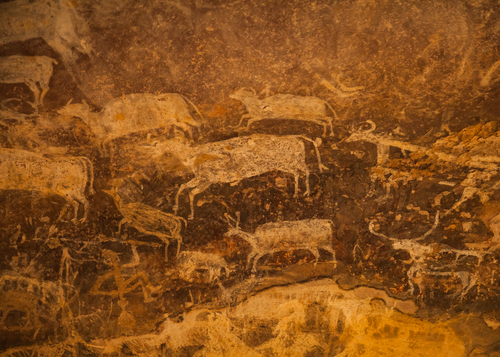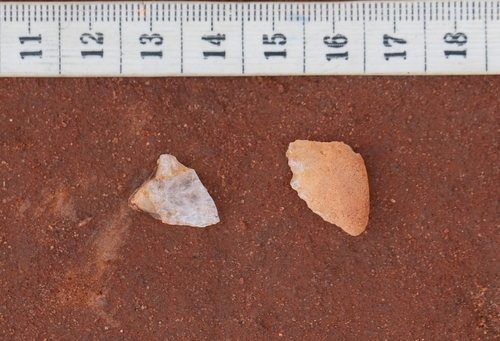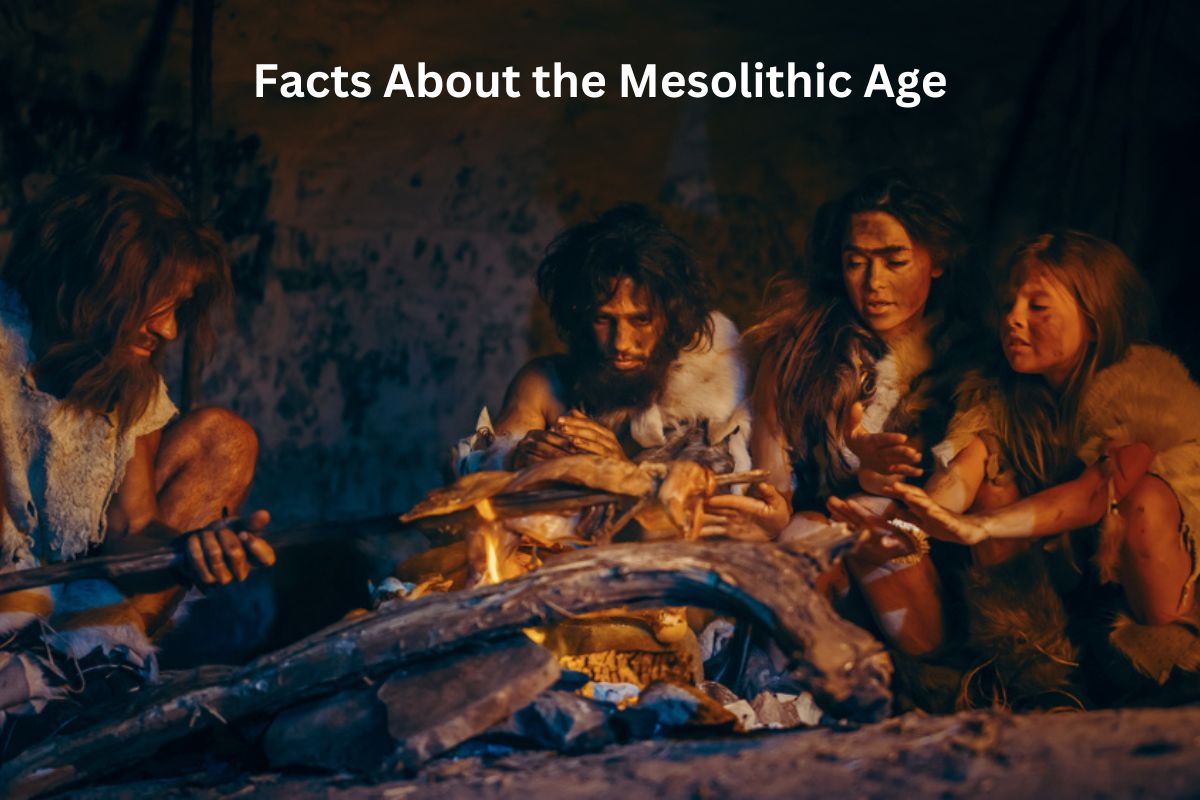The Mesolithic Age, often referred to as the Middle Stone Age, represents a crucial transitional period in human prehistory.
Spanning roughly from 10,000 to 6,000 BCE, this era bridged the gap between the Paleolithic, characterized by nomadic hunter-gatherer lifestyles, and the Neolithic, marked by the dawn of agriculture and settled communities.
During the Mesolithic, significant changes in climate and technology shaped the ways in which early human societies interacted with their environments and laid the foundations for the profound transformations that would follow in the Neolithic Age.
In this brief exploration, we will delve deeper into the key aspects that define the Mesolithic Age.
Mesolithic Age Facts
Time: 10,000 to 6,000 BCE
The Mesolithic Age occurred after the Paleolithic (Old Stone Age) and before the Neolithic (New Stone Age) in human prehistory.
It’s important to note that these dates are approximate and can vary by region. Different parts of the world transitioned into and out of the Mesolithic at slightly different times.
Transition: From hunting-gathering to early farming
The Mesolithic is often referred to as a transition period because it marked a significant shift in human lifestyles.
During the preceding Paleolithic, early humans were primarily nomadic hunter-gatherers, relying on stone tools for survival.
Also Read: Paleolithic Period Timeline
In contrast, the Neolithic witnessed the advent of agriculture and animal domestication, leading to settled farming communities.
The Mesolithic bridges this gap, showcasing the gradual development of new technologies and social structures that paved the way for the Neolithic Revolution.

Climate change: Warmer conditions as the last Ice Age ended
The end of the last Ice Age (Pleistocene Epoch) had a profound impact on the Mesolithic Age.
As the glaciers retreated and the climate warmed, it led to changes in ecosystems and the availability of resources.
Also Read: Neolithic Age Facts
This shift in environmental conditions played a crucial role in the way Mesolithic societies adapted and evolved. It allowed for the proliferation of new plant and animal species, which in turn influenced human settlement patterns and subsistence strategies.
Lifestyle: Hunter-gatherers relying on hunting, fishing, and foraging
The Mesolithic Age was characterized by a predominantly hunter-gatherer way of life. Mesolithic people relied on hunting, fishing, and foraging to meet their basic needs for food and resources.
Hunting focused on animals like deer, wild boar, rabbits, and smaller mammals. These were often pursued with more advanced weapons like bows and arrows, thanks to the development of microliths (small, finely crafted stone tools) that allowed for more efficient hunting.
Fishing played a significant role, with Mesolithic communities using nets, traps, and hooks to catch fish and other aquatic life.
Foraging involved gathering a wide range of plant-based foods, including nuts, berries, fruits, and edible roots.
Mobility: Seasonal movement to follow resources
Mesolithic groups often practiced seasonal mobility, moving their camps or settlements in response to changes in the availability of resources. This mobility was a key survival strategy.
For example, during the warmer months, they might move closer to rivers or lakes to take advantage of fish runs and the lush vegetation along waterways. In the winter, they might migrate to more sheltered areas or locations with different game to hunt.
Seasonal mobility allowed them to exploit a variety of environments and food sources throughout the year, ensuring a more stable food supply.

Microliths: Small, advanced stone tools like arrows
One of the distinctive features of the Mesolithic Age was the development and use of microliths, small stone tools that were precisely crafted and often geometric in shape.
Microliths were used to create more advanced weapons, such as composite bows and arrows. These innovations greatly improved hunting and fishing efficiency.
The use of microliths represents an important technological advancement during this period and marked a shift from the larger, more crude stone tools of the Paleolithic era.
The precision and versatility of microliths were indicative of the increasing sophistication of tool-making skills in Mesolithic societies.
Fire: Used for cooking, warmth, and protection
Control and use of fire remained a critical aspect of Mesolithic life. Fire was used for various purposes:
- Cooking: Fire was essential for making food more digestible and palatable.
- Warmth: It provided warmth and protection from the elements, which was crucial during colder seasons.
- Light: Fire served as a source of light, extending the hours of activity during the dark nights.
The ability to maintain and control fire was a significant technological advancement that improved overall survival and comfort.
Art: Cave paintings, rock art, and figurines
Mesolithic people created various forms of art and symbolic expression, providing insights into their culture and beliefs.
Cave paintings and rock art, found in places like the Lascaux Caves in France and the Bhimbetka rock shelters in India, depicted animals, humans, and abstract symbols. These artworks likely had ritual or religious significance.
Figurines, often carved from bone or stone, were also common during this period and may have served ceremonial or symbolic purposes.
Such artistic expressions suggest the development of symbolic thought and spirituality among Mesolithic societies.
Social structure: Developing complexity and trade networks
Mesolithic societies exhibited increasing complexity in their social structures compared to the earlier Paleolithic era.
While still primarily kin-based and organized into small groups, there is evidence of more complex social organization, including the emergence of leaders or elders with influence over the group.
Trade networks also began to develop, enabling the exchange of goods and resources between different Mesolithic communities.
These developments laid the groundwork for more intricate social structures that would evolve further in the Neolithic period.
Domestication: Early attempts at farming and animal taming
The Mesolithic Age witnessed the initial stages of plant and animal domestication, which would become defining features of the subsequent Neolithic Age.
Early experiments in cultivating crops like wheat, barley, and legumes began during this period. These experiments eventually led to the development of agriculture.
Similarly, the process of taming and selectively breeding animals for food and other resources began in the Mesolithic. It marked the transition from purely hunting wild animals to managing domesticated herds.
These early attempts at domestication were a crucial step towards the agricultural revolution of the Neolithic, where farming and animal husbandry became central to human subsistence.
